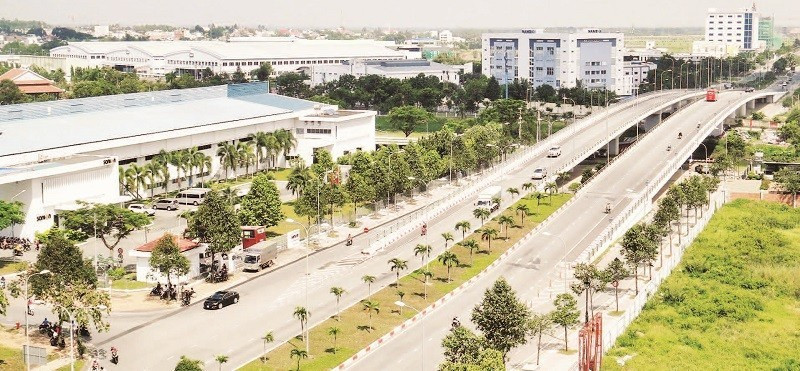Ho Chi Minh City seeks ways to innovate industry
After the merger, Ho Chi Minh City is reshaping its industrial production model towards smart, high-tech industry, using knowledge as a new growth driver to move towards an international megacity.

This is an important premise for the city to participate deeply in the global value chain, towards a green, sustainable production.
In the context of the 4.0 industrial revolution, smart production has become a “key” factor that not only helps businesses improve their competitiveness, but also increases productivity, reduces costs and optimises processes.
Inevitable trend
With the advantage of a strategic location, fast digital transformation speed, and accelerated application of science and technology in production, the city has the opportunity to become a smart manufacturing centre of the region and the world.
According to Vo Van Than, Chairman of the Ho Chi Minh City Industrial Zone Enterprises Association (HBA), Resolution No.57-NQ/TW on breakthroughs in science, technology, innovation and national digital transformation, and Resolution No.68-NQ/TW on private economic development are two very important resolutions that create momentum to promote Viet Nam’s economy in the new era.
Aiming at the goal of smart production, the association has set the goal of promoting and encouraging businesses to invest and transform according to the smart production model and sustainable smart industrial parks.
This is an opportunity, as well as a challenge, and we expect businesses to have a more objective vision of the trend, seize the opportunity to take advantage of existing potentials to expand cooperation to create strong business communities and sustainable development; thereby, contributing to the development of the national economy in the new era, the era of the nation’s rise.
Vo Van Than, Chairman of the Ho Chi Minh City Industrial Zone Enterprises Association
After the merger, Ho Chi Minh City has more than 60 export processing zones, industrial parks, and high-tech parks in operation. The transformation of traditional industrial park models into smart industrial parks to aim for green and sustainable development in the current context is urgent.
Smart manufacturing is an inevitable trend of modern industry, in the context of Viet Nam accelerating international integration, participating deeply in global value chains, and facing new demands on net emissions, resource efficiency and green transformation.
According to Che Van Trung, Director of Cat Lai Industrial Park, while many new industrial parks are being planned in a modern direction, most of the traditional industrial parks were established a long time ago, with outdated infrastructure, low land use efficiency and lack of technological linkages, revealing many limitations in attracting high-quality investment, protecting the environment and connecting to global value chains.
The transition to a new generation integrated industrial park model, applying digital technology, integrating industrial parks-urban-services, logistics, developing a circular economy and meeting ESG standards (environment, society and governance) is an inevitable direction to upgrade endogenous capacity, solving the problem of long-term sustainable development for the national industry.
Strategic shift
To transform itself into a regional smart manufacturing hub, Ho Chi Minh City has chosen a separate path that combines smart manufacturing with sustainability. And industrial restructuring is not seen as a “green factory” race following the trend, but as a strategy to reposition the city’s role in the global value chain.
However, to realise this goal, the city needs to invest in a modern, smart and synchronous logistics system, improving the competitiveness of production in the context of deep integration and restructuring of the global supply chain. With a favorable economic position, the city has the potential to become a strategic transit and production hub of the region.
The development of seaports, airports and smart industrial parks not only helps optimise logistics costs, but also creates favourable conditions for FDI and domestic enterprises to participate more deeply in the global value chain. In the new era, where speed, connectivity, and supply chain efficiency determine competitive position, logistics and smart manufacturing are the decisive factors for cities to promote production, attract high-tech investment, and move towards sustainable industrial development.
Experts say that one of the inevitable trends in the restructuring of the manufacturing industry in Viet Nam and Ho Chi Minh City is to relocate production facilities out of urban areas, focusing on new-generation industrial parks with synchronous infrastructure, digital technology, centralised management, and sustainable development standards.
The relocation not only aims to solve the problems of pollution, urban overload, and inefficient land use, but also creates conditions for businesses to upgrade technological lines, optimize supply chains, and comply with international standards. In the context of global production shifts and increasing market demands, the journey of relocating factories to new-generation industrial parks is not simply a geographical shift, but a strategic shift for the industry to break through in the new era.
Nguyen Ngoc Hoa, Chairman of the Ho Chi Minh City Business Association (HUBA), said that the transition to a sustainable smart production model requires large, stable and long-term financial resources. In Viet Nam, the need for technology transformation, digitalisation of production and compliance with ESG standards is increasing, posing an urgent need to expand effective, transparent and flexible capital channels.
The connection between the production sector and the financial ecosystem, from banks, stock markets to international financial institutions, will be a strategic turning point to help Viet Nam, as well as Ho Chi Minh City, accelerate the process of modernising production associated with sustainable development in the new era.








